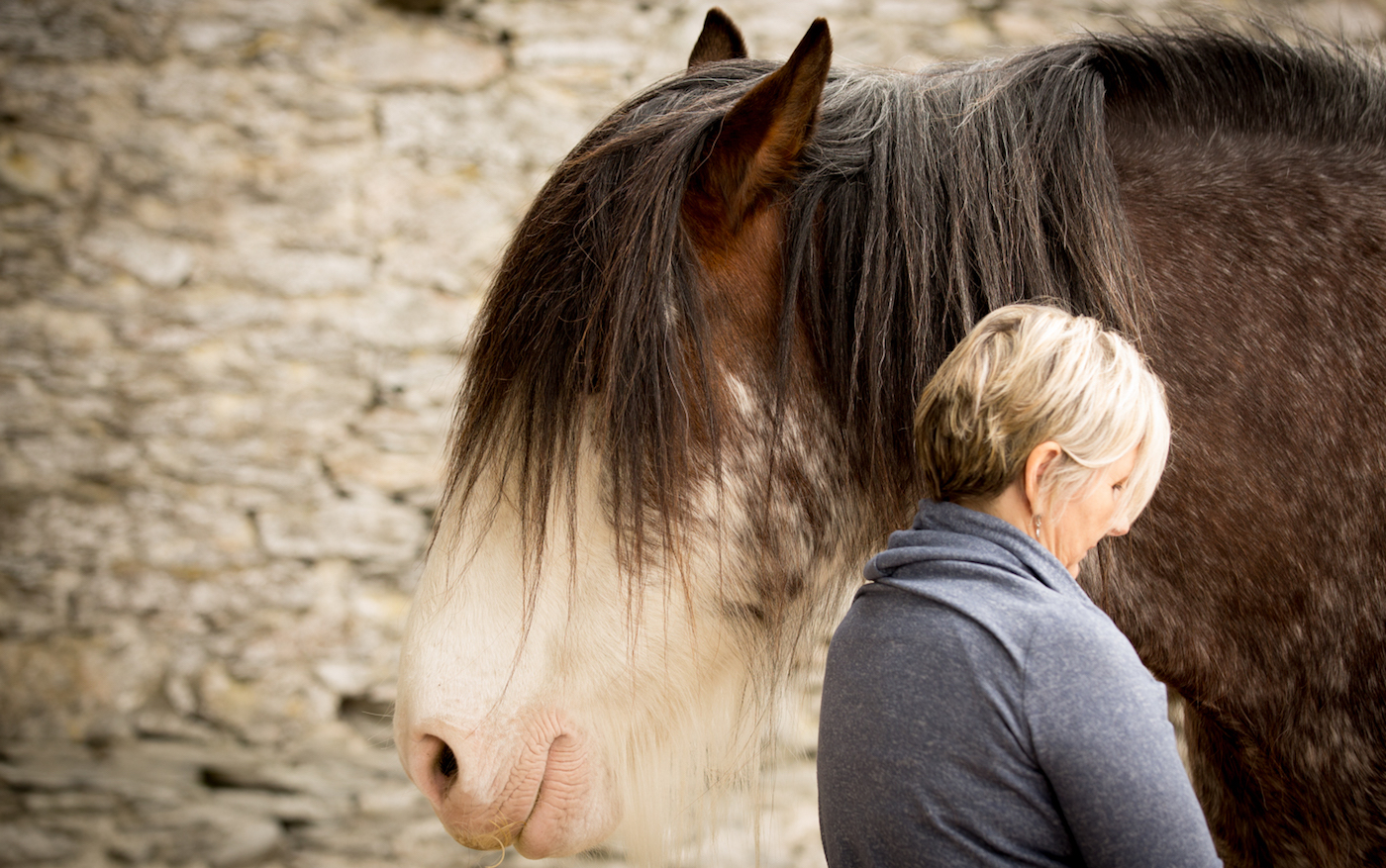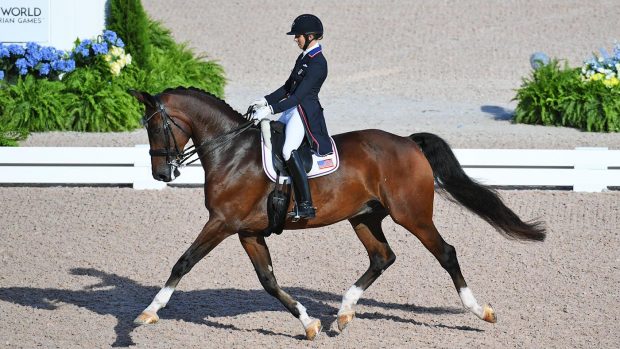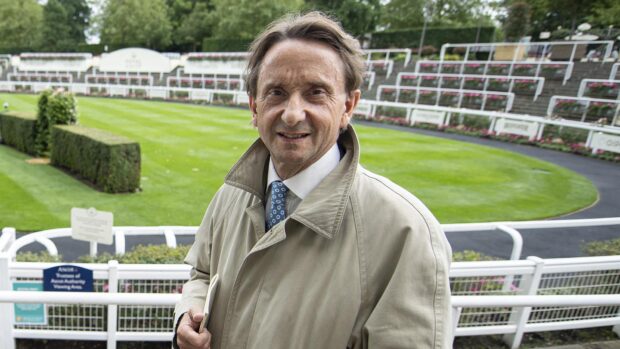A Cumbrian retreat is taking equine therapy in a new direction by offering meditation sessions with Clydesdales.
Whasdyke Farm, in the Lake District, already offers trekking and carriage driving opportunities with the breed, but is now providing breaks where creative endeavours such as writing or painting can be combined with horse-based meditation.
Katherine Beaumont runs the meditation sessions, which she said use nature and the animals to help people “come into a place of stillness and peace and access inner creativity”.
Sessions begin with a talk on horse psychology and safety, where Katherine explains why horses respond the way they do during the meditation, mirroring the calmness displayed by the clients.
“We tell them about syncing central nervous systems and describe the science behind it — the co-regulation of the central nervous system is critical for all mammals,” she said. “If we are peaceful, they are peaceful. If we are fearful, they too are fearful, and so on.”
Clients are also told what to expect from the meditation, including that uncomfortable feelings that have been suppressed can come to the surface.
“We coach people on how to deal with that and what to do if they feel upset or anxious,” she said. “I talk them through coming into present moment, listening to the sounds, smells, touch and sensation and tuning into the natural environment around them.”
Katherine then “brings down” the horses to a state of calmness — which she describes as “below a three on a scale of one to 10, when they’re gooey” — after which clients are able to go into a fenced off area with them and sit down on the floor.
“The horses don’t move and if they do they tend to be very connected and aware of where people are — all the ones we use are well used to it,” said Katherine, who uses Clydesdales owned by Debbie Henderson from Hands On Heavy Horses, already based at Whasdyke.
“The horses sometimes lie down and we’ve had people snuggling up to them, or they just feel very peaceful in their presence. Horses are very good at dealing with people’s grief and because the Clydesdales are big and awesome, they feel parented and protected.”
During the guided meditation that follows, she says it’s common for “people to cry a lot” as the horses “bring things out in them”.

“Horses don’t do emotional incongruity,” she said. “If a voice is saying one thing but viscerally the person is experiencing another, they are aware of it.
“Throughout the day it helps people to let go of a few things which might be blocking their creative channels and individual uniqueness — it’s all about encouraging people to shine.”
Katherine started exploring meditation as a way of processing a “traumatic” childhood but did not link it to horses until a serious riding accident left her with no choice but to change pace.
“I was traditionally taught and used to be the person to take charge and show them who is boss,” she said. “I was completely different back then and like a lot of equestrians, a bit nuts. I would have a timetable stuck to my fridge which went from 5am til 8pm — I’d think ‘I’ve got 56 minutes to ride, I’ll do this today’ and I was on and off the horses like they were bikes.”
Katherine had a horse, Olaf, who was reactive to dogs — she was encouraged to take the approach of “make him go past them” — but it caused him to rear and flip over backwards while she was hacking alone down a bridlepath.
“He landed on top of me and broke my pelvis in four places,” she said. “I was of a mindset at the time that if I stopped for one minute, everything would fall apart. I was running a business and looking after the kids but Olaf made me stop and reassess everything. It could have been terrible but now I’m really glad that it happened.”
During the three months she was unable to walk, Katherine started “sitting in paddocks with my horses and meditating”.
“I felt like I still had to go and spend time with them and I noticed that they changed,” she said. “They would come and lie down with me and I wondered why I hadn’t seen them like that before. It was quite transformative and I realised they liked me without the neurological noise and emotional disturbance.
“It was a process of me trusting them and not working with them from a place of fear, now we do things together because we want to do it, not by putting pressure on them,” she explained.
Continues below…

Namaste-neigh? Welcome to horse yoga
One woman has combined her two passions of horses and yoga to come up with a concept that is making

‘Age is just a number’: how to keep riding into your 90s
Meet some avid equestrians who are following their horsey passion in their golden years to find out how they keep

Subscribe to Horse & Hound magazine today – and enjoy unlimited website access all year round
While many of the clients at the Full Circle retreats — launched last month —are non-horsey, Katherine also works with equestrians to help them overcome issues they might be having with their own horses.
“I go out to yards and teach them meditation,” she said. “It’s a good way of training your horses, if they’re frightened of loading or dogs it’s a way of supporting them.
“You can meditate with them and bring them down in their anxiety levels as they pick up your heart rate. It’s a useful technique.”
She also has clients work with her own horses — a rescue called Yogi and a Connemara called Eddie.
“What’s really important is what we can learn from our horses, they are biologically made to react and respond to their environments like they do,” she said. “With dogs, we benefit from their endless exuberance, sense of adventure, compassion and forgiveness and horses can also teach us all of those things.”
For all the latest news analysis, competition reports, interviews, features and much more, don’t miss Horse & Hound magazine, on sale every Thursday.




